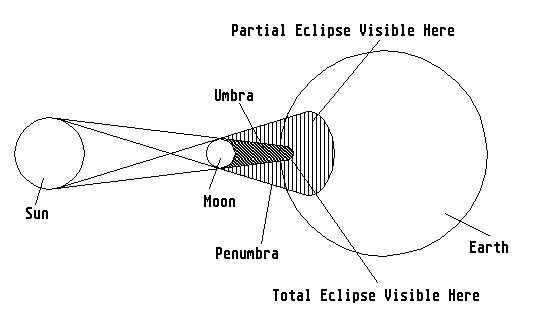
A few days back I posted a wonderful picture of the recent total solar eclipse taken from the ground. This one is taken from a slightly different vantage point: the International Space Station.
In this, we can see the darker central shadow, which is called the umbra. In this corridor, it will be possible to view the eclipse as a total eclipse. Around it is a fainter shadow where some light is still getting through. This part is known as the penumbra. If the eclipse is viewed from here, the moon will only cover part of the sun.

But Earth isn't the only place eclipses can occur. Eclipses can actually occur on any body that has a satellite large enough that it's angular size is greater than, or equal to, that of the sun when viewed from that distance. This means that Jupiter's largest moons, known as the Gallilean moons, can all cast shadows that would be percieved as eclipses if viewed from below.

Meanwhile, in other places, like Mars, the satellites will be too small to completely cover the sun. Thus, the object will only partially block the sun. For example, here's Phobos going across the Sun as viewed from the Opportunity rover which is still working away on the surface of Mars:

Events such as this, in which one object passes in front of another, but does not completely block it, are called transits.
Another type of event that is similar is called an occultation in which a large object passes in front of another (excluding the sun and moon). This happens occasionally with the moon passing in front of various stars and on rarer occasions, planets.

That's all for today's astronomy lesson.


3 comments:
OH NO, there's a hole in Earth!
I bet, that's where the UFO's hide.
Excellent theory. Let's teach that in schools.
Very cool. I love the pics - especially the near-eclipse by Phobos. Thanks!
Post a Comment